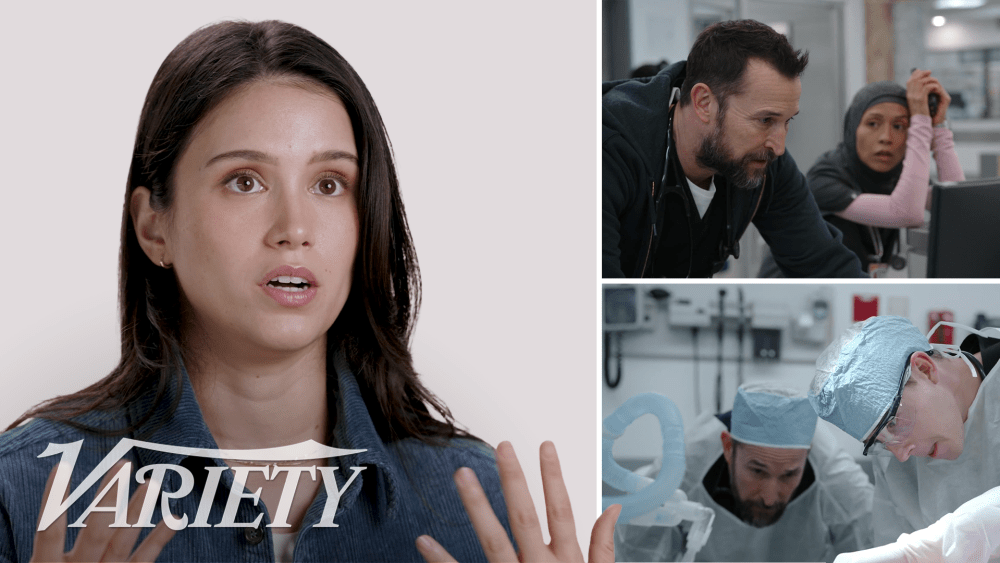‘The Pitt’s’ Medical Consultant on Coaching Actors Through Jargon and Medical Emergencies the Show Gets Right
Max’s “The Pitt” is considered to be medically accurate, and that’s thanks to the creative team.
Dr. Lizzie Ferreira is a real-life emergency medicine physician and is one of the medical consultants on the show. “It starts with John Wells, Noah Wyle, Scott Gemmill. They created and cultivated a culture where it was absolutely imperative to get it right and to show it as accurate and as authentic and as messy as possible,” she says.
Speaking with Variety‘s Artisans, presented by HBO, Ferreira explained that while the scenes begin in the writers’ room, those eventually trickle down to the medical consultants whose job it is to bring that authenticity. “When we were working through a scene with both the director and the cinematographer verbalizing what we’re anticipating the actresses or actors to do in that moment on what cued line, allows the DP to plan her shots and do her blocking so that way those very sensitive moments or emotional moments can be captured with the action of the medicine at the same time.”
As a medical consultant on the show, another major part of her role is working with the cast. The show, which is set in real time, with 15 episodes covering a 15-hour workday, features over 300 background extras as well as its principals, Noah Wyle, Tracy Ifeachor, Patrick Ball, Katherine LaNasa, Taylor Dearden and Isa Briones. “It’s really the rehearsal and the education and teaching them the finesse and the refined movements.”
By the end, the cast has natural movements as they intubate, put a cast on, or an IV. She also works with them on the technical jargon that again helps them speak with ease and emotion.”
While there are countless medical emergencies throughout the day on the show, Ferreira reveals the scene that stuck most to real-life was in episode 4 when an older patient has multifocal pneumonia and sepsis. Ferreira says, “You see the struggle of what intubation looks like. The general audience learns what intubation looks like. And then going through the process of transitioning to comfort care to allow there to be dignity in death is actually one of the most common conversations we have both in the emergency medicine setting and the hospital and critical care unit.” She goes on to say, “I think it’s actually a really great educational moment to let people see that sometimes there is dignity in death. It’s a bit disturbing, but it gets all of it in one beautiful moment.”
In another episode, an influencer gets mercury poisoning from makeup. How accurate is that? Ferreira says, “Mercury poisoning is, I wouldn’t say rare, but not as common. We do see a lot of toxicities from various household chemicals, various makeup products, or just exposures to general environmental things quite often.”
The attack on Dana by a frustrated patient in episode 9 is something that reflects violence towards doctors and healthcare workers. But Ferreira clarifies, “I think the inspiration behind showing Dana get punched is one, there is an actual level of violence in the emergency department. I never call the ER a glamorous place. And it’s because we’re seeing all walks of life. We do not discriminate. So, whether it’s patients who are unfortunately under the influence of various drugs, if they have underlying psychiatric disorders, if they’ve gone through a very traumatic moment and coping mechanisms are not in place for them to tolerate any bad news.”
She continues, “Sometimes it can be projected onto the healthcare worker who is either providing the bad news or somehow the system is failing the healthcare worker, which then fails the patient. And Dana is the perfect character to have this happen to because you see someone who’s been trying the entire season to move the department along, to get patients seen, to try her best to take care of not just the patients but her staff and acts as this mama bear to everyone.”
Watch the video above.


